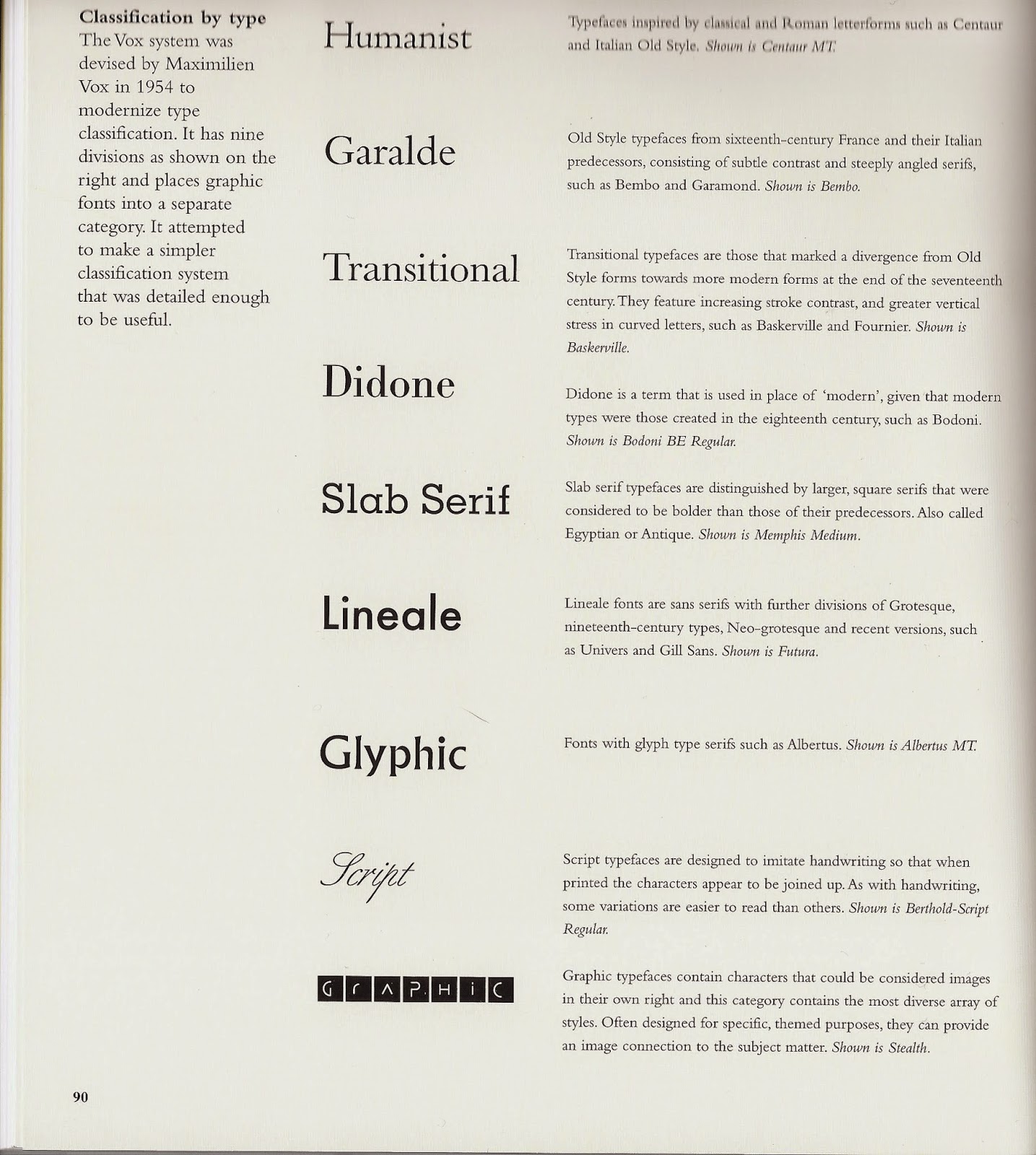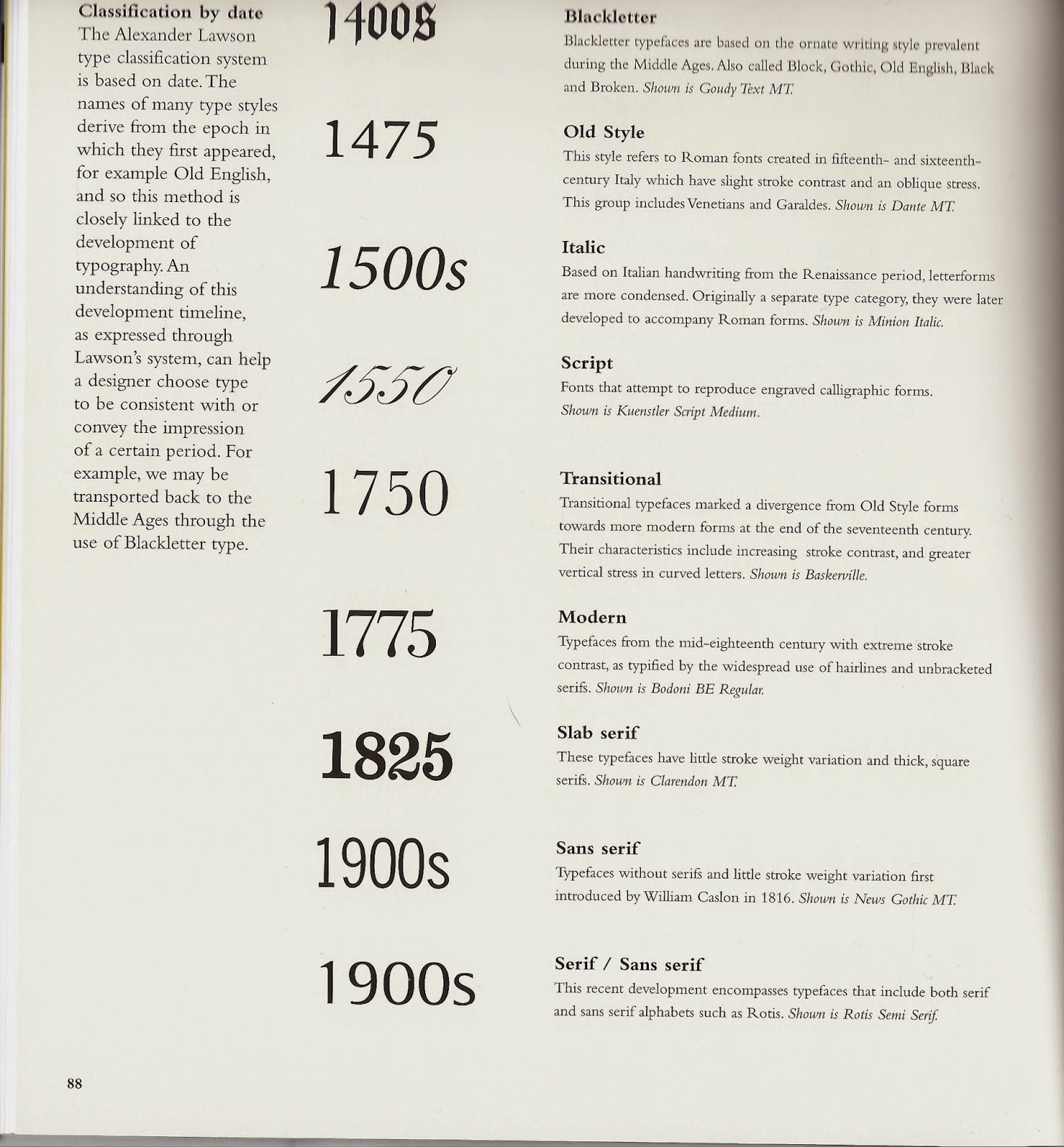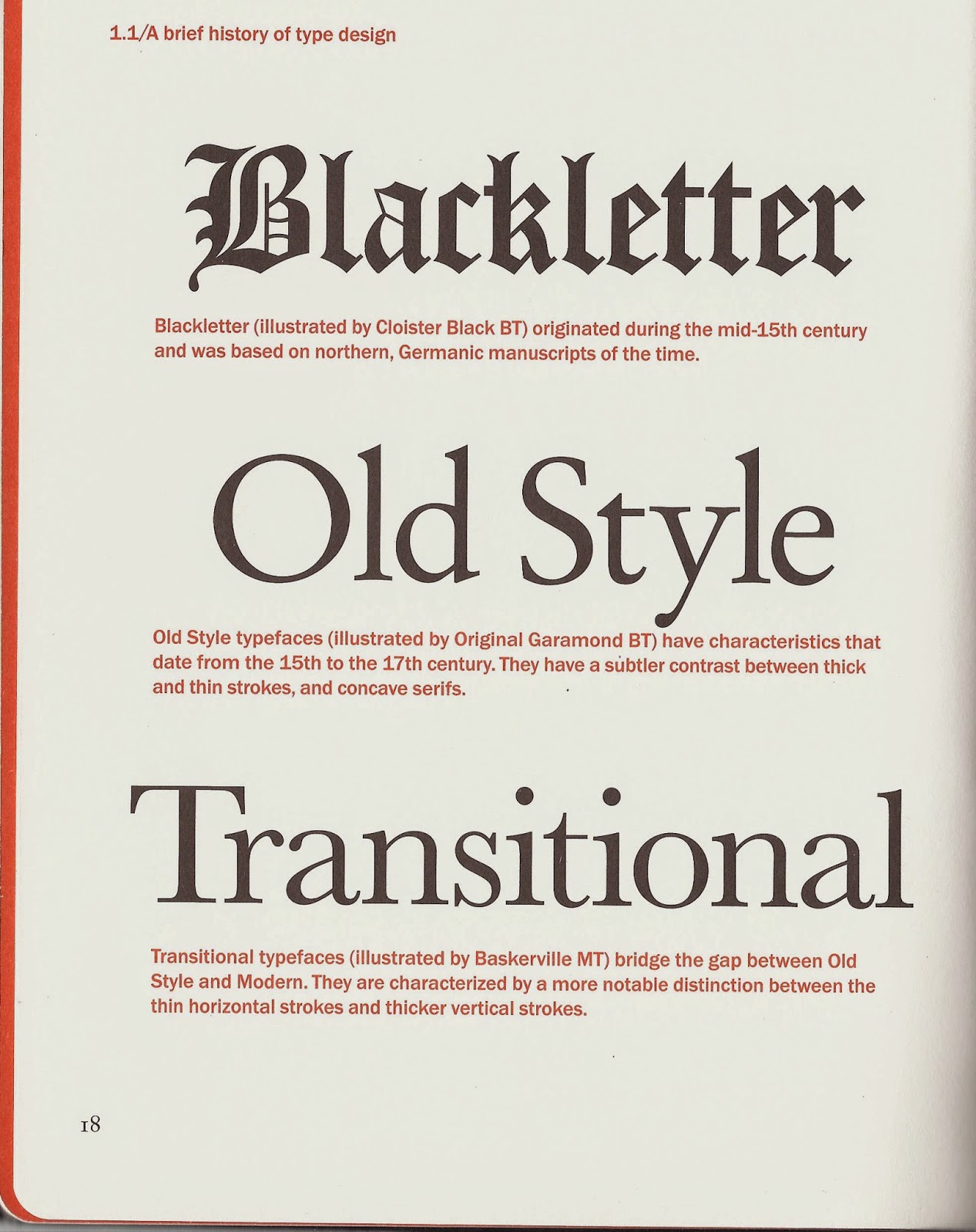The classification of type is the way in which typefaces are categorised. A classification system can be helpful in identifying, choosing and combining typefaces.
The first classification system was proposed by Francis Thibaudeau in 1921. His system was based on categorising the serifs of the letters.
The primary “official” classification system currently is the Vox-ATypI system. Originally put together in 1954 by Maxmilien Vox.
These 9 categories are then split down into further divisions to account for the variety in characteristics.
Ambrose, G. and Harris, P. (2011 [2006]) ‘The Fundamentals of Typography’, 2nd Edition, Switzerland: AVA Publishing SA
The Vox system was adopted in 1962 by the Association Typographique Internationale (ATypI), which made a minor change at the 2010 conference to include Gaelic as an extra category. It classifies typefaces in 11 general categories, with some subdivision.
Another way in classifying type is by date, a system created by Alexander Lawson.
Ambrose, G. and Harris, P. (2011 [2006]) ‘The Fundamentals of Typography’, 2nd Edition, Switzerland: AVA Publishing SA
A more general way in classifying type is by overall characteristics. Instead of going a detailed at the Vox system, this follows date and style, grouping them very generally in six categories.
From these different classification systems they all are very similar in the categories, and an overall and general classification system can be created in: Blackletter, Old Style, Transitional, Modern, Slab Serif, Sans Serif & Graphic.
http://www.fonts.com/content/learning/fontology/level-1/type-anatomy/type-classifications
http://www.designhistory.org/Type_milestones_pages/TypeClassifications.html
http://www.smashingmagazine.com/2013/04/17/making-sense-type-classification-part-1/






No comments:
Post a Comment